Heterosis,combining ability on yield,yield components and quality traits of purple sweet corn
2022-08-09PHAMQuangtuanNGUYENTrungducNGUYENThinguyetanhVUThixuanbinhVUVanlietLYURonghuaZOUChenglinLYUJiaming
PHAM Quang-tuan,NGUYEN Trung-duc,NGUYEN Thi-nguyet-anh,VU Thi-xuan-binh,VU Van-liet*,LYU Rong-hua,ZOU Cheng-lin,LYU Jia-ming
(1Vietnam National University of Agriculture,Hanoi 100803,Vietnam;2Division of International Cooperation,Guangxi Academy of Agricultural Sciences,Nanning,Guangxi 530007,China;3Maize Research Institute,Guangxi Academy of Agricultural Sciences,Nanning,Guangxi 530007,China;4College of Computer and Electronic Information,Guangxi University,Nanning,Guangxi 530004,China)
Abstract:【Objective】Heterosis and combining ability analysis on yield,yield components and quality traits of 20 purple sweet corn inbred lines and 2 tested varieties were conducted,to provide material foundation and theoretical basis for effectively creating high-yield sweet corn inbred lines.【Method】Twenty purple sweet corn inbred lines(TD01-TD20)and 2 tested varieties[yellow sweet corn inbred line(T1)and white sweet corn inbred line(T2)]were crossbred to ob‐tain 40 hybrid combinations(TH01-TH40)that were taken as materials in a field experiment with randomized complete block design,in which SW1011 and Fancy 111 were taken two check varieties.Yield,yield components and quality traits of parental and hybrid combinations were determined.Mid-parent heterosis(Hm),heterobeltiosis(Hb),and general com‐bining ability(GCA)analyses were conducted via Line ×Tester model in AGD-R software.【Result】The purple color in seed coat was proven inherited from the male parent,and thus,dominated in all hybrids.Hm and Hb were observed in all investigated traits.Negative Hm,Hb,and GCA values on fresh ear harvesting time were observed in most parental lines,indicating such parental lines had potential for production of early harvest hybrids.Dominance effects were found in al‐most all the traits investigated,except for harvesting time and ear diameter,exemplifying the importance of non-additive genetic effects.Lines with high GCA value were TH05(T1×TD05),TH31(T2×TD11),TH20(T1×TD20),TH33(T2×TD13),TH34(T2×TD14),TH16(T1×TD16),TH08(T1×TD08),and TH25(T2×TD05).【Conclusion】When purplesweet corn was crossbred with yellow sweet corn inbred lines or white sweet corn inbred lines,purple traits have domi‐nance effects.Therefore,8 high-quality hybrid varieties and their parental lines are screened,which can be taken as paren‐tal materials for purple sweet corn variety cultivation in Vietnam.
Key words:purple sweet corn;yield;quality;combining ability;hybrid advantage
0 Introduction
【Research significance】Since Butelli et al.(2008)reported anthocyanin significantly extended lifespan of cancer-susceptible mice,crops with purple color parts which indicated high anthocyanin content had been promoted because they contain antioxidants that improved immune systems.Quality traits such as sweetness and anthocyanin content were important traits for economic specialty corn breeding(Tracy et al.,2019).With supersweet genes shrunken-2(sh2)orbt1,combining purple color pigment from waxy corn is a novel strategy to develop a new type of cornpurple sweet corn,a hybrid fruit corn which could be eaten at the milking stage without any processing.Se‐lecting elite purple sweet corn inbred lines that had high heterosis performance and good combining abili‐ty was a fundamental step for hybrid fruit corn breeding program.【Research progress】Fruit corn was a newly proposed type of specialty corn that had high quality and could be eaten at the milking stage without cooking.Total anthocyanins in purple corn was way higher than that in blue and red corn(Mendoza et al.,2021).Because of these novel nutrient sources,the demand for purple super sweet corn was increasing in the food supply(Hu et al.,2020).Purple and black sweet corn was an outcome of genetic broke the link‐age between genes anthocyaninless-1(a1)andsh2(Brewbaker and Martin,2015),and this kind of corn was helpful for health improment regarding antioxi‐dant activities of anthocyanins(mainly cyanidin,peon‐idin,and pelargonidin),phenolic compounds,flavo‐noid and carotenoids(Baseggio et al.,2020;Feng et al.,2020;Hong et al.,2020;Hu et al.,2020).Super sweet corn was a specialty crop harvested at 18-22 days after pollination and widely spread in US,and many Asian countries such as China,Korea,Indone‐sia,Vietnam,and Thailand(Revilla et al.,2021).It contained recessive genes,sh2orbt1,high sugar con‐tent and longer shelf life(Tracy et al.,2019).It was a novel source of vitamins,minerals,phytochemicals(Baseggio et al.,2019;Xiao et al.,2020;Chen et al.,2021;Revilla et al.,2021).The utilization of hetero‐sis or hybrid vigor was vital for crop breeding and pro‐duction(Labroo et al.,2021)and one of the most suc‐cessful examples in crops was from corn(Hochhol-dinger and Baldauf,2018).Breeding experience showed that parental performance itself was in consis‐tent with hybrid performance.Excellent hybrids did not always come from elite parents.Therefore,breeders shall assess parental lines based on their potential to produce superior hybrids,not just their perfor‐mance(Riedelsheimer et al.,2012;Zhao et al.,2015).To identify the parental lines with great potential in making hybrids,combining ability had been estimated and used to select desirable parents and thus their hybrids.【Research point】Breeding sweet corn hybrid containing both good sweetness and high anthocyanin content was challenging for corn breeders.In this breeding program,deve-loping purple sweet corn in‐bred lines homogenous inwxwxA1a1sh2sh2orwx‐wxA1a1bt1bt1genes with high general combining ability(GCA)value was critical.However,the allele fre‐quency of those homogenous lines was very low,only 0,1% because of single low-frequency linkage break‐age.Line×Tester mating design was an effective meth‐od widely used in many corn breeding programs to estimate GCA and specific combining ability(SCA)effect and differentiate the suitable parents(Hallauer et al.,2010).Additionally,it identified gene action that was responsible for the expression of the interest traits even in a small sample size.This method helped selecting superior parents for developing novel hy‐brids-related traits.The GCA and SCA variances were used to determine the contribution of additive and non-additive gene effects concerned in the expression of targeted characteristics,respectively.The GCA rep‐resented additive gene effects,while SCA referred to the deviation of hybrid performance from the parents used,and it was associated with non-additive gene ef‐fects(Zhou et al.,2018;Zhang et al.,2021).The ad‐ditive genetic effect was valuable in quality improve‐ment(Maqbool et al.,2021),whereas non-additive gene action had a greater role in the genetic control of maize grain yield under different environments(Yu et al.,2020).GCA or SCA values,which one was more important depended on traits and hybrids,for exam‐ple,in terms of yield and aflatoxin,GCA value was more important than SCA value (Meseka et al.,2018).【Solving problems】To tackle this problem,since 2016,purple waxy corn and yellow sweet corn wrer crossed,and then based on morphological mark‐ers such as shrunken type with dark purple seed coat,modified mass selection and selfing technique were applied to select purple sweet corn inbred lines.After 3 years with 6 selfing generations,20 novel purple sweet corn inbred lines were successfully selected.In this study,a Line×Tester mating design was adppted among 20 purple sweet corn inbred lines in Spring sea‐son 2020.The parental lines and their hybrids with check varieties were evaluated in Autumn-Winter 2020 to determine the combining ability,understand the additive effect,heterosis performance of those pa‐rental lines,and select the elite purple sweet corn in‐bred lines and promising hybrids for fruit corn hybrid breeding program.The results of this study contributed to understanding the genetic basis of heterosis and combining ability in specialty corn research,providing a novel strategy for developing a new type of nu‐tritious corn for a fresh market.
1 Material and Method
1.1 Plant material
Plant materials included 20 purple sweet corn lines(TD01-TD20),2 testers(T1 and T2)(Table 1).Their 40 crosses with 2 commercial check varieties SW1011(yellow sweet corn-Viet Thai Seeds)and Fancy111(purple waxy corn-Advanta Company)(Ta‐ble 2)in Summer-Autumn season 2020,Vietnam Na‐tional University of Agriculture,Gialam district,Ha‐noi,Vietnam.Twenty purple sweet corn lines were de‐veloped from population crossed between four purple waxy corn inbred lines NT12,NT19,NT35,NT41(Thailand)and yellow sweet corn inbred lines YSW3(Guangxi,China).Modified mass selection(Hallauer et al.,2010)and selfing technique(Shull,1909)were applied to select only purple sweet corn lines shrunken kernels with purple to black color in the seed coat.
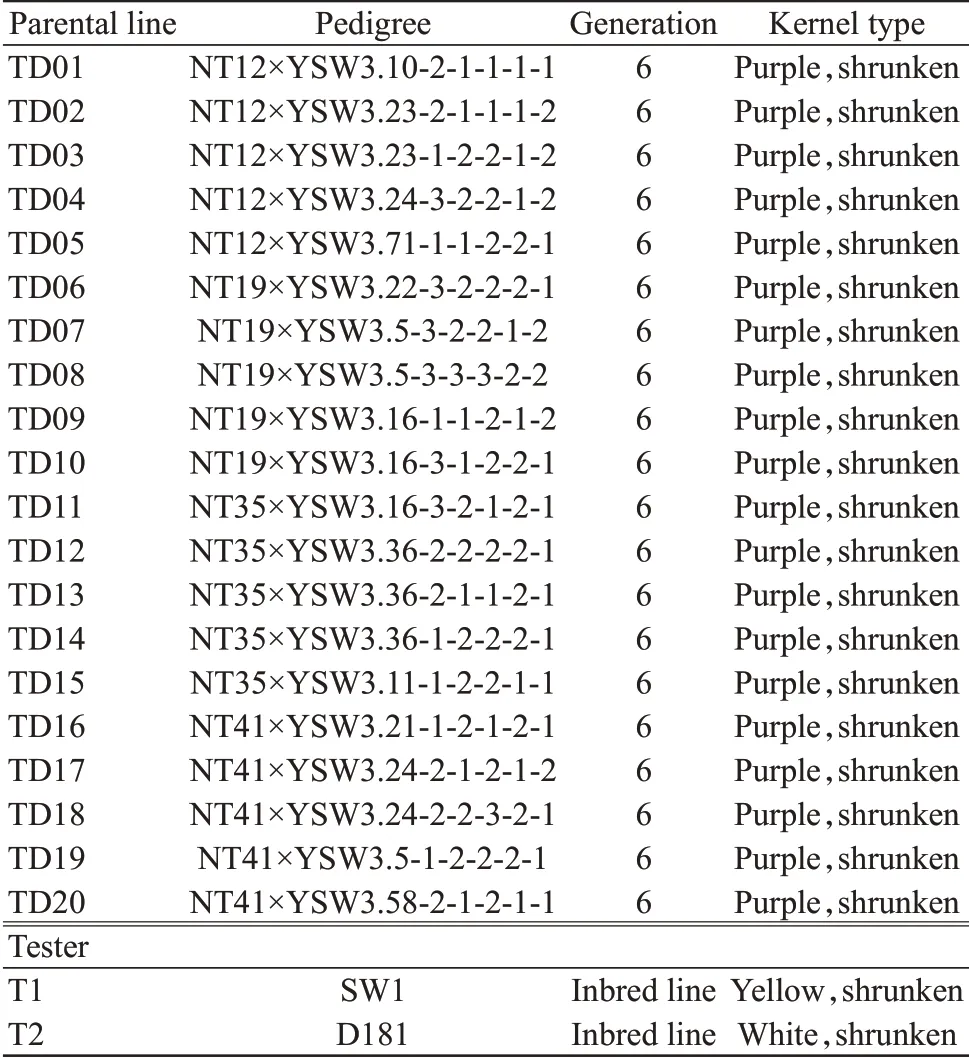
Table 1 Details of purple sweet corn inbred lines and two testers

Table 2 List hybrids and check varieties in the experiment
1.2 Experimental design
The field experiment including 20 parental lines,2 testers,40 topcross hybrids,and 2 checks was laid out in a randomized complete block design with 3 rep‐lications in Autumn-Winter season 2020,14 m2plot area(2.8 m×5.0 m)with 0.70 m between-row and 0.25 m between-plant spacing.Field management and fertilizer recommended(130 kg/ha N+80 kg/ha P2O5+70 kg/ha K2O+10 t/ha organic manure)by Vietnam national standard QCVN 01-56:2011 / BNNPTNT(Vietnamese Ministry of Agriculture and Rural Devel‐opment,https://tcvn.info/qcvn-01-56-2011-bnnptntkhao-nghiem-gia-tri-canh-tac-va-su-dung-giong-ngo.html.)for optimum corn production were used.
To avoid the xenia effect,30 plants of each plot were pollinated manually.The plant height(PH),ear height(EH),ear length(EL),ear diameter(ED),kernel row per ear(KRE),kernel per row(KR)of pa‐rental lines,and their hybrids were measured from 10 randomly selected plants after pollination in each plot.The average of three replicates plots represented the mean trait of hybrids,respectively.The harvesting time to fresh ear(DTH)also was recorded.Thirty plants from the second and third rows in each plot with corn cob straight shape,high tip fill was collected and dehusked to measure marketable yield.The average of 3 replicates plots represented the mean mar‐ketable yield of each hybrid.Ten ears were used to measure total solid soluble contents(BRIX)using a digital refractometer(PAL-1,Atago Co.,Ltd.,Ja‐pan).Pericarp thickness(PER)was determined by a micrometer according to the method described by So(2018).Ten kernels were soaked in distilled water for 24 h,and the tip,crown,and abgerminal side were separated by a razor blade and dried at room tempera‐ture.Adigital micrometerAsimeto 105-01-0(0-25 mm)was used to measure the thickness of the pericarp at three positions.The genotype was classified as thin pericarp if mean PER≤60µm followed Choe(2010)’s suggestion.Total anthocyanin content(AN)was esti‐mated using the pH differential method according to Giusti and Wrolstad(2001).
1.3 Statistical analysis
All data was statistically analyzed using analysis of variance(ANOVA)by Statistix ver.10.Mid-parent heterosis(Hm)and heterobeltiosis(Hb)were calculated by AGD-R(Rodríguez et al.,2015)using the following equation:
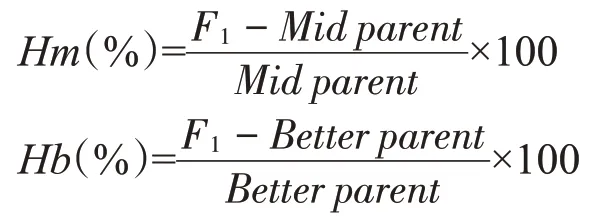
General combining ability analysis by Line×Tes‐ter model in AGD-R(Rodríguez et al.,2015)was per‐formed using the following equation:

yijkis the observed value;µis the general mean;REPkis the replicate effect(k=1,2,…,r);liis the line effect(i=1,2,s…,m);tjis the tester effect(j=1,2,…,f)and eijkis the residual.
Multi-trait genotype-ideotype distance index(MGIDI)proposed by Olivoto and Nardino(2021)with 10% selection intensity was used to select promising purple sweet corn hybrids.MGIDI is calculated and visualized by“metan”package(Olivoto and Lúcio,2020)in R 4.1.1(R Development Core Team 2021).The hybrids with the lowest MGIDI are closer to the ideotype,thus,is promising for potential com‐mercialization.

yijis the score of theithaccession in thejthfactor(i=1,2…,t;j=1,2…,f);t and f the number of acces‐sions and factors,respectively;andyjis thejthscore of the ideal accession.
The figures were visualized by“ggplot2”pack‐age(Wickham,2016)in R 4.1.1(R Development Core Team,2021).
2 Results and Analysis
2.1 Analysis of variance
Mean squares of the ANOVA of the agronomic traits,yield,yield components, and quality of paren‐tal lines and their hybrids were shown in Table 3.The result showed that analysis of variance showed a statis‐tically significant difference(P<0.01)on all studied traits including DTH,PH,EH,EL,ED,KRE,KR,1000-grain weight(TKW),marketable yield(MY),BRIX,PER,and AN(Table 3).

Table 3 Mean squares ANOVA of the agronomic traits,yield,yield components,and quality of parental lines and their hybrids
2.2 Agronomic performance of F1 hybrids
The results shown in Table 4 indicated that the time from sowing to fresh ear harvesting of parental lines ranged from 69.3 d(T2)to 78.0 d(TD02,TD05,TD14).PH of parental lines ranged from 99.7 cm(TD10)to 143.7 cm(TD18).EH of parental lines ranged from 45.0 cm(TD06)to 75.9 cm(TD07).EH/PH of parental lines ranged from 39.1%(TD05)to 56.3%(TD08).MY of parental lines ranged from 4.73 t/ha(TD16)to 7.83 t/ha(TD02).EL of parental lines ranged from 9.7 cm(TD16)to 14.7 cm(TD06).ED of parental lines ranged from 3.4 cm(TD10)to 4.4 cm(T2).KRE of parental lines ranged from 10.0(TD12)to 16.0(TD15).KR of parental lines ranged from 13.0(TD15)to 28.0(TD03).TKW of parental lines ranged from 94.0 g(TD05)to 146.0 g(TD12).BRIX of parental lines ranged from 13.0%(TD13)to 22.5%(TD05).
AN of parental lines ranged from 19.5 mg/100 g(T2)to 259.3 mg/100 g(TD15).PER of parental lines ranged from 31.4 µm(TD05)to 59.3 µm(TD12).Overall,all twenty purple sweet corn inbred lines had BRIX≥13.0%,AN≥100 mg/100 g,and PER≤60 µm,classified into thin pericarp group.In this study,two testers,viz.,T1(SW1-yellow sweet corn inbred line)and T2(D181-white sweet corn inbred line)had high BRIX(BRIX=18.2%-19.5%)and were assigned to a thin pericarp group with pericarp ≤60µm according to the proposed classification of Choe(2010).In recent years,So(2018)suggested that corn lines that had pericarp less than 50 µm were suitable for breeding high-tender waxy corn hybrid program.
Forty topcross hybrids with two check varieties,viz.,purple waxy corn hybrid Fancy111 and yellow sweet corn hybrid SW1011 were also evaluated in Autumn-Winter season 2020 for combining ability analysis.Yellow sweet corn check variety SW1011had an average fresh corn harvest time of about 83.0 d(Table 5).Interestingly,all topcross hybrids had a significantly shorter DTH time atP<0.05,from 6-20 d shorter than both two check varieties SW1011(83.0 d)and Fancy111(86.0 d).All topcross hybrids had pur‐ple seed coat at fresh corn harvesting time that indicated the dominant purple color trait was completely in‐herited from the TD purple sweet corn lines.
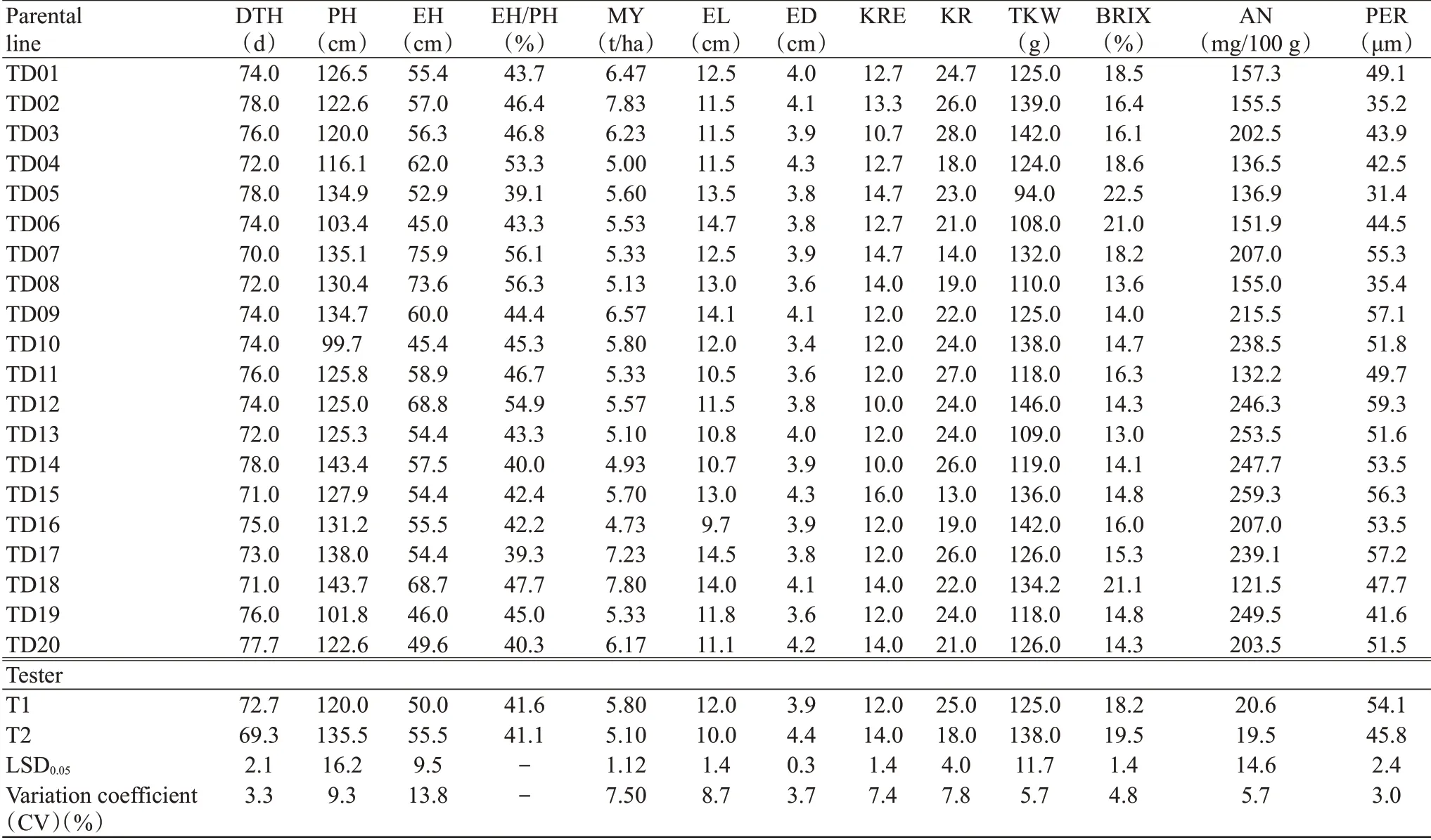
Table 4 Phenotypic traits performance of parental lines in Autumn-Winter season 2020,Hanoi,Vietnam
All hybrids had uniform shrunken kernel type,which might be due to those parental lines were sweet corn.However,endosperm color seemed to be inherited from the maternal lines.The endosperm of the hy‐brids crossed between the parental lines and tester T1(yellow sweet corn)had the same yellow color as the check SW1011 and the endosperm of the hybrids crossed between parental lines and tester T2(white sweet corn)were white.
Yield and quality of hybrids in Autumn-Winter season 2020,Hanoi,Vietnam were shown in Table 6.The marketable yield of those hybrids varied from 10.65 t/ha(TH16)to 14.61 t/ha(TH05).TH05 had a marketable yield significantly higher than check 2 va‐riety SW1011(13.96 t/ha).Twelve hybrids including TH01,TH20,TH40,TH31,TH04,TH32,TH35,TH13,TH08,TH38,TH29,and TH30 had an indif‐ference in terms of marketable yield compared to check 2 variety SW1011(P>0.05),ranged from 13.09 t/hato 14.29 t/ha.
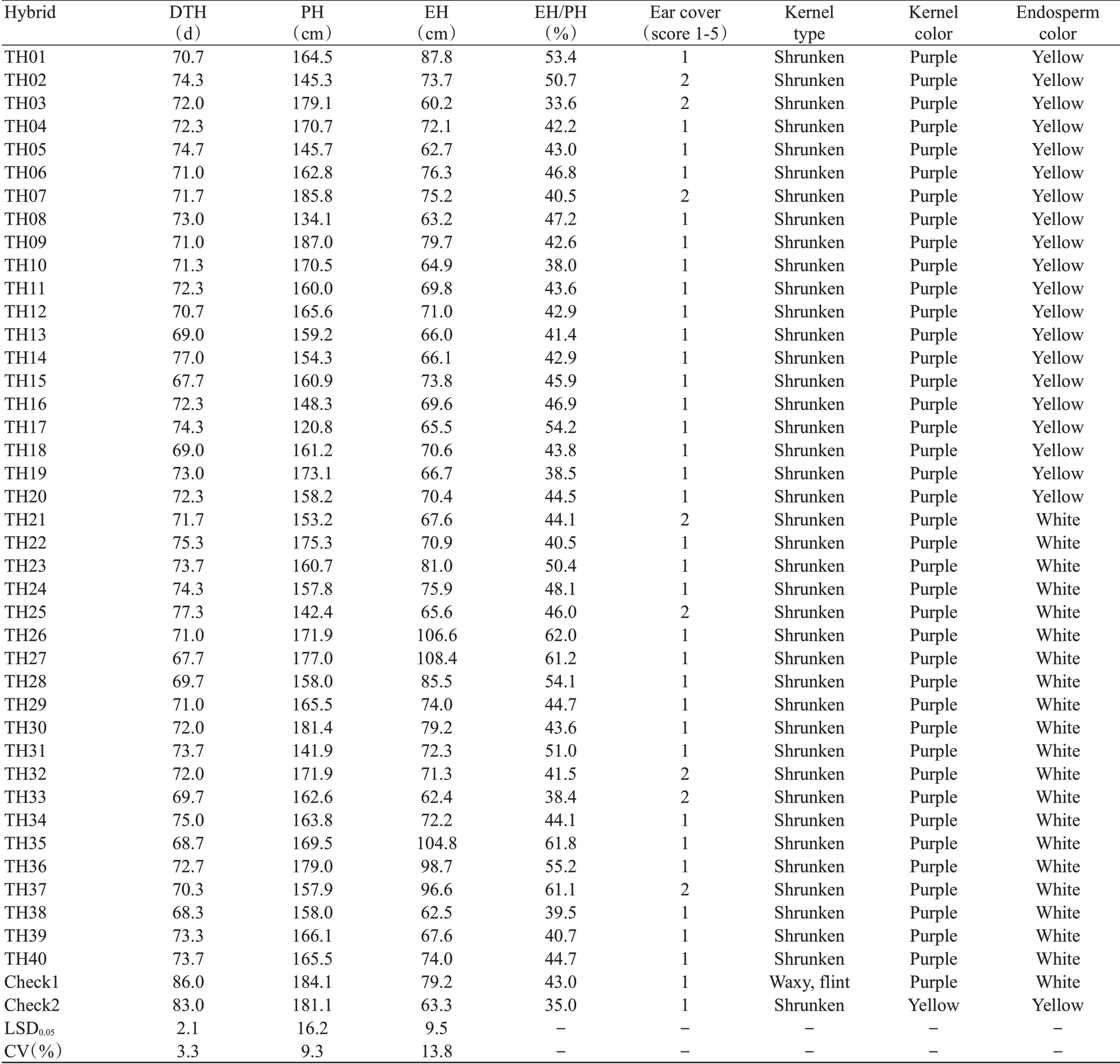
Table 5 Agronomics traits of hybrids in Autumn-Winter season 2020,Hanoi,Vietnam
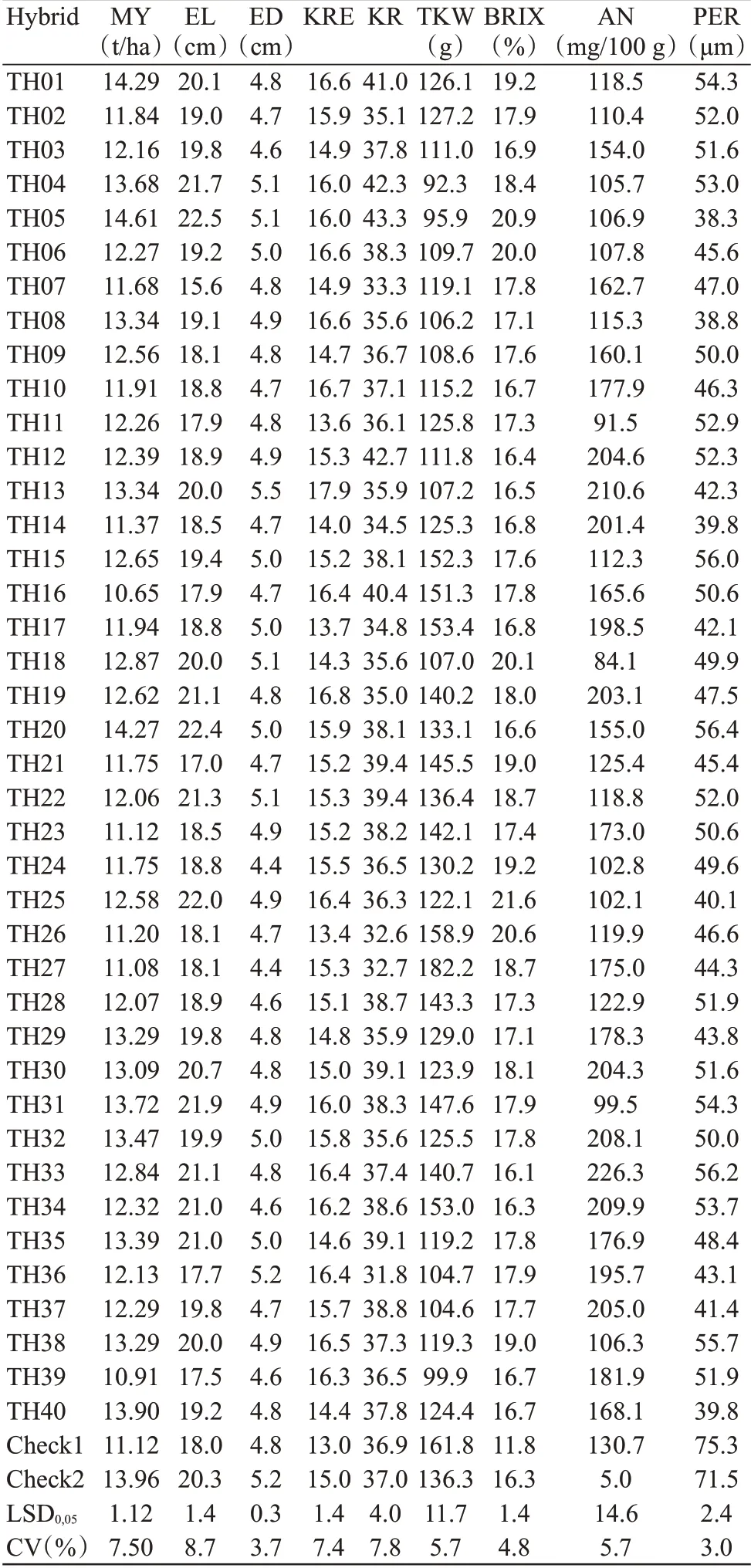
Table 6 Yield and quality of hybrids in Autumn-Winter season 2020,Hanoi,Vietnam
The quality traits included the BRIX of the hy‐brids that ranged from 16.1%(TH33)to 21.6(TH25).All topcross hybrids had BRIX value significantly higher than that of Fancy111(11.8)atP<0.05.AN of topcross hybrids ranged from 84.1 mg/100 g(TH18)to 226.3 mg/100 g(TH33).In addition,23 hybrids anthocyanin content varying from 154.0 mg/100 g to 226.3 mg/100 g,which were significantly higher than the check 1 variety Fancy111(130.7 mg/100 g)atP<0.05.All hybrids had superior AN as compared to the check variety yellow sweet corn SW1011.The aver‐age PER of the hybrids ranged from 38.3 µm(TH05)to 56.4 µm(TH20).Thus,all hybrids were catego‐rized into thin-pericarp group <60.0 µm according to the classification proposed by Choe(2010).
2.3 Correlation between yield,yield components,and quality traits
The results from the Boxplot plot showed that the apical hybrids had significantly shorter harvesting time than their parents did(Fig.1).The result showed that yield and all components of all top crosses had significant higher over their parental lines excepted AN parameter.There was no significant difference be‐tween the parent lines and their hybrids on AN trait.The Pearson correlation coefficient(r)is a statistic that measures the statistical relationship or association be‐tween yield,and quality traits.The results showed that MY had a positive and very close correlation at the level of statistical significanceP≤0.001 with yield-related traits such as EL(r=0.916***),ED(r=0.882***),KRE(r=0.659***)and KR(r=0.887***).The correlation coefficient in the crossbreed was generally higher than that of the parental lines.In selecting hybrid corn varieties or elite parental lines,the correlation results between these yield components could serve as the ba‐sis for yield improvement through the improvement of yield components and line/variety selection.The elite hybrids or parental lines were not only selected based on yield but also selected by multiple traits to increase the accuracy of the selection to meet the closest ideo‐type.

Fig.1 Correlogram of yield,yield components and quality traits of parental lines and their hybrids
2.4 Heterosis of parental lines
Hmdetermines the percentage increase or de‐crease of topcross hybrids compared to the mean value of the parents andHbdetermines the percentage in‐crease or decrease of topcross hybrids compared to the value of the best parent.Analysis ofHm,Hbhybrid dominance on 10 traits of forty hybrids crossed be‐tween purple sweet corn inbred lines with two testers(white sweet corn)(Table 7 and Table 8).The results showed that most hybrids had negativeHm(-5.2% to 5.8%)andHb(-6.9% to 3.2%)for DTH.There was positiveHm,Hbfor MY,and yield-related traits pre‐sented in all hybrids.For quality traits,there was posi‐tiveHm,Hbfor AN.Some positiveHmandHbwere also found in PER and BRIX parameters in some crosses.However,negative results of overallHmandHbwere found in TKW,PER,and especially AN in terms ofHb.Crosses TD11×T2,TD05×T1,and TD04×T1 had highest mid-parent heterosis on MY trait with 163.5,156.1 and 153.7,respectively.Crosses TD11×T2,TD05×T1 and TD13×T2 had higherHbvalue on MY trait with 158.5% and 151.7%,and 151.0%,respectively.
2.5 General combining ability parental lines
The variance analysis of growth,yield,and quality traits showed that the mean square of the line,tester,and line×testers interaction were statistically significant atP<0.01 for all traits except the effect of the tester on BRIX and PER Table 9,and the additive variance PER was nearly to zero,which indicated that these traits were 100%influenced and regulated by the genotype effect.An additive effect(σ2A=7.59)and a dominant effect(σ2D=2.79)were detected on BRIX.When crossing the purple sweet father line with the yellow sweet and white sweet lines,the additive effect(σ2A=6731.44)was found to be very strong on the an‐thocyanin content trait.

Table 7 Hm on yield,yield components and quality of parental lines
The results showed that TD05 and TD14 had sig‐nificantly positive GCA value on fresh ear harvesting time(DTH)(P<0.05).Four lines including TD07,TD13,TD15 and TD18 had significant negative GCA value on DTH.Some parentals such as TD18 and TD20 had significant high GCA on marketable yield,TD05 had significant positive GCA on EL while TD07 and TD16 had significant negative GCA on this trait.TD13,TD15 and TD18 had significant positive GCA on ED while TD10 and TD19 had the opposite result.TD05 and TD15 had significant positive GCA on KRE.TD03,TD12,and TD17 had significant negative GCA on this trait.TD01,TD03 had significant positive GCA on KR while TD07 had negative result.In terms of TKW trait,TD07,TD15 and T2 had sig‐nificant positive GCA value,TD04,TD05 and T1 had significant negative result on this trait.TD05 and TD06 had significant positive GCA value on BRIX while TD13 and TD14 had significant negative GCA value on this trait.Three lines including TD12,TD13,and TD14 had significant positive GCA value in AN,while TD11 and TD18 had opposite results.Threelines TD05,TD08,TD15 had significant negative GCA value in terms of PER.
2.6 Selection of promising purple sweet corn hybrids
Line×tester mating design also can be used to se‐lect promising hybrids for future multi-environment trials.To select promising purple sweet corn hybrid,a MGIDI was used to select genotypes that was the closest to ideotype based on multiple traits.“h”was used to indicate the trait in which higher value was desired or“l”to indicate the variables in which lower value was desired.The results showed that thirteen traits were classified into 5 groups based on factor analysis(Table 10).

Table 8 Hb on yield,yield components and quality of parental lines

Table 9 Quantitative parameter from Line×Tester model

Table 10 General combining ability effects on yield and quality

Table 11 Traits classification and goal for selection
With 20% selection intensity,eight promising hybrids were selected including TH05(T1×TD05),TH31(T2×TD11),TH20(T1×TD20),TH33(T2×TD13),TH34(T2×TD14),TH16(T1×TD16),TH08(T1×TD08),and TH25(T2×TD05),which had superior quality and higher marketable yield,and equivalent to the check variety,high-yield yellow sweet corn SW1011.The strength and weakness view of each promising hybrid based on traits group presented in Fig.2(B)was also very useful for plant breeding to optimize the potential of those hybrids in the different environmental conditions.These hybrids had the po‐tential for commercialization and need to be evaluated in multi-environment trials.
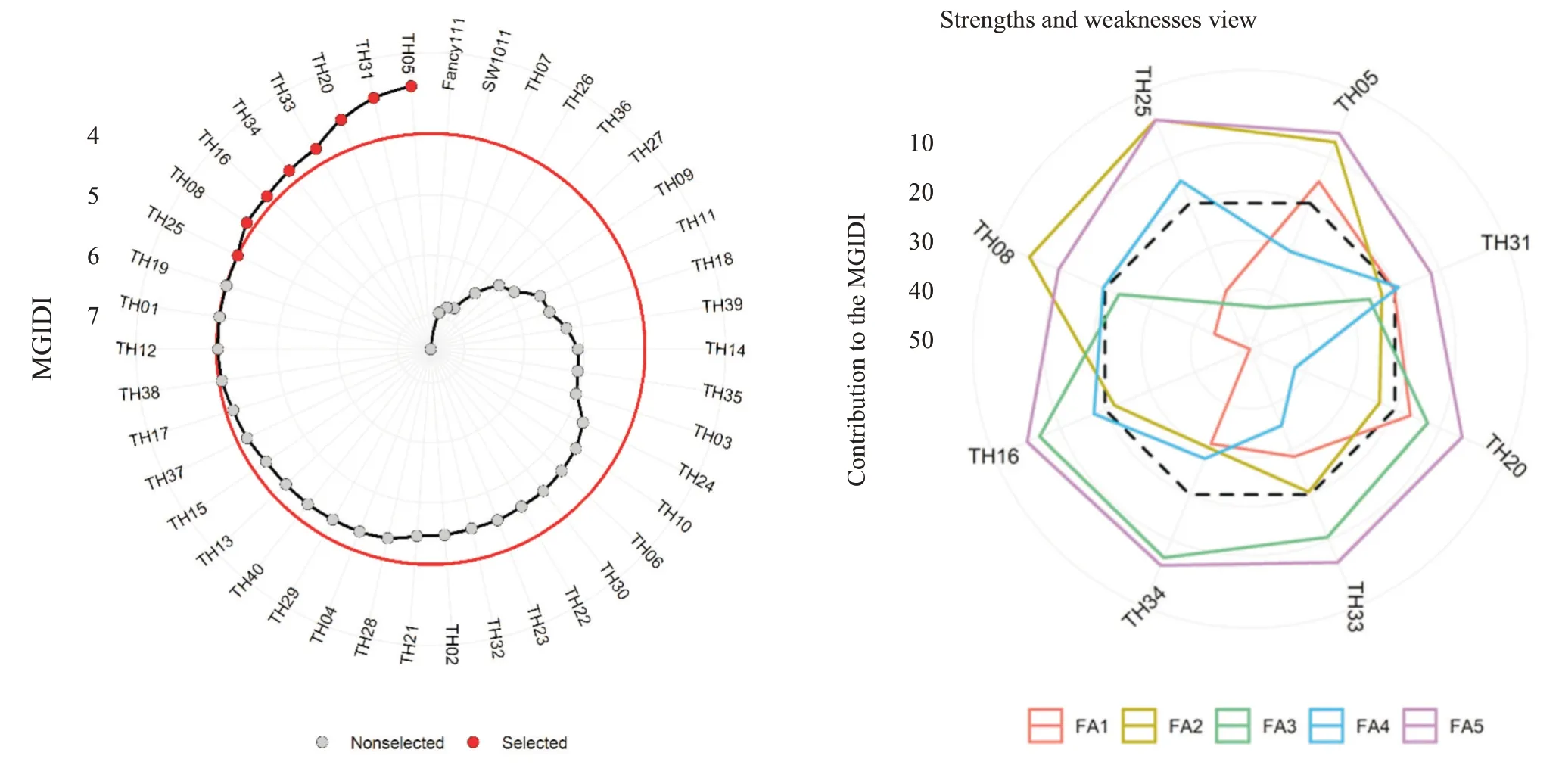
Fig.2 Selection of promising hybrids based on MGIDI index(A)and strengths and weaknesses view of their hybrids(B)
3 Discussion
Among recurrent selection methods,the mass se‐lection is probably the most effective for improving traits with high heritability and simple evaluation.In addition,mass selection is inexpensive,permits the largest possible population for low-intensity selec‐tion,and offers the greatest additive genetic variancewith quick improvement when a single selection cycle is possible per year(Hallauer et al.,2010).However,the response to mass selection in quantitative traits is low.The modified mass selection was developed from classic mass selection in which only selected plants are pollinated.It has been implemented for increasing ear prolificacy of small ear waxy corn(Kesornkeaw et al.,2009),EL(Senamontry et al.,2013),yield(Hus‐sanun et al.,2014),husk and cob color(Khamphasan et al.,2020b)of waxy corn.In this study,by applying the modified mass selection method,after six selfing generations,based on morphological marker and agro‐nomics performance,twenty novel purple sweet corn inbred lines were selected and continuously main‐tained by selfing and half-sib if any inbreeding re‐duced the vigor of those lines.However,due to the limitation of SSR or SNP genetic marker,this study was unable to identify those inbred lines that were ho‐mogenous onwxwxA1a1sh2sh2orwxwxA1a1bt1bt1.
ANOVA result showed that there was a large ge‐netic difference between parental lines and their hy‐brids.This result is also consistent with the study of Khamphasan et al.(2020a)and Kamara et al.(2021).It might be due to the genetic background different be‐tween parental lines and testers leading to superior hy‐brid performance(Hochholdinger and Baldauf,2018;Xiao et al.,2021).
Combining ability and heterosis are required for traits dissection and crop improvement.Heterosis has been extensively exploited in the process of maize breeding and genetic factors contributing to heterosis is combining the ability of parents.Consequently,corn inbred line is essential for corn hybrid develop‐ment.Since Sprague and Tatum(1942)proposed the concepts of GCA and SCA,it has been used as a ma‐jor strategy to increase grain yield(GY)especiallymaize breeding,with a series of genetic mating de‐signs.GCA is the average performance of F1traits.Compared with SCA for specific combinations,using GCA to select inbred lines and elite combiners as the guideline is more accurate and effective.
The effectiveness of hybridization depends great‐ly on general combining ability.Sprague and Tatum(1942)used the term GCA to designate the average performance of a line in hybrid combinations and used the term SCA to define those cases in which certain combinations do relatively better or worse than would be expected based on the average performance of the lines involved.The GCA analysis enables identifying parents with the ability to transmit their desirable characters to the offspring;the additive gene effects pre‐vail in these offspring.Zheng et al.(2021)identified association loci in both yield and GCA of yield in corn.In this study,GCA value had an important role on yield and yield-related traits.These results are con‐sistent with the study in corn by Meseka et al.(2018),and in rice by Xiang et al.(2016).
When crossing white waxy corn lines(male line)with yellow sweet corn lines(female line)to evaluate combining ability,Fuengtee et al.(2020)found that the additive effect plays an important role in the total sugar content of kernels.In this study,when crossingthe purple sweet corn line with the yellow sweet corn line and the white sweet corn line,the additive effect was also be detected and stronger than the dominant effect.In normal corn breeding program,aiming to produce profitable hybrids,the parental lines that have high compatibility and combining ability with each other show the highest GCA value.The results revealed that in general,the parental genotype with low GCA effect produced cross combinations with the best and desirable SCA value.This situation indicated that in purple sweet corn,low×low GCA parent per‐formed well in producing promising hybrid popula‐tions with the best performance for growth,marketable yield,and quality-related traits.Parental genotypes with nega-tive GCA value produced promising hy‐brids,viz.,TH05(T1×TD05),TH31(T2×TD11)with the best performance for marketable yield and total soluble so-lids.A similar phenomenon in tradi‐tional sweet corn(Yuwono et al.,2017)might cause by the effects of beneficial genes in the two parental lines that hide non-useful gene effect and the capabili‐ty of the parents to combine with each other.This study also found eight hybrids and their parental lines including TH05(T1×TD05),TH31(T2×TD11),TH20(T1×TD20),TH33(T2×TD13),TH34(T2×TD14),TH16(T1×TD16),TH08(T1×TD08),and TH25(T2×TD05)have high marketable yield and quality.In comparison with 2 check varieties,all of the hybrids performed superior in terms of AN and BRIX,these hybrids have potential to become the first hybrid fruit corn variety in Vietnam.
4 Conclusion
Combining the GCA value with MGIDI multitrait selection index with 20% selection intensity,the study identified eight hybrids and their parental linesincluding TH05(T1×TD05),TH31(T2×TD11),TH20(T1×TD20),TH33(T2×TD13),TH34(T2×TD14),TH16(T1×TD16),TH08(T1×TD08),and TH25(T2×TD05),which had superior quality and high marketable yield,and equivalent to the yellow sweet corn check variety SW1011.These hybrids need to be tested on farms to develop the first commercial purple sweet corn variety in Vietnam.
When purple sweet corn crossbred with yellow sweet corn inbred lines or white sweet corn inbred lines, purple traits have dominance effects.Therefore,8 high-quality hybrid varieties and their parental lines are screened, which can be taken as parental materials for purple sweet corn variety cultivation in Vietnam.
